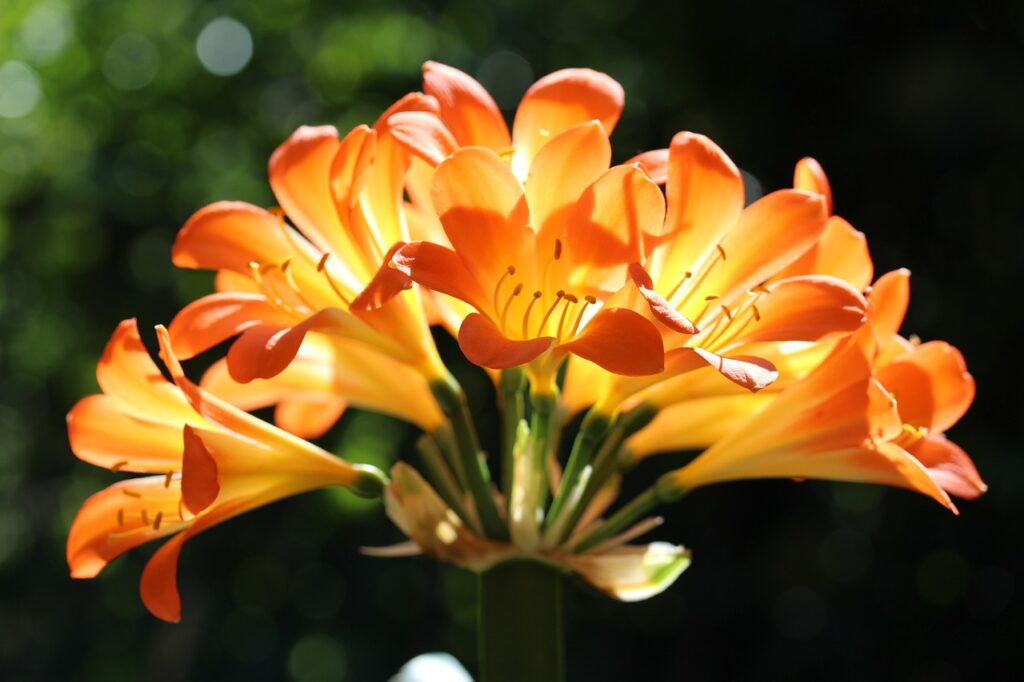The Clivia miniata, also known as the Natal lily or forest lily, is a beautiful houseplant that adds an attractive touch to any home or conservatory. Native to South Africa, this plant is able to thrive for many years, reaching a height of 18 inches and a width of 12-16 inches. In this article, we will be discussing the basics of Clivia care, including tips for light and water requirements, soil type, general maintenance, propagation, and common pests and diseases.
Table of Contents
The Clivia miniata, also known as the Natal lily or forest lily, is a beautiful houseplant that adds an attractive touch to any home or conservatory. Native to South Africa, this plant is able to thrive for many years, reaching a height of 18 inches and a width of 12-16 inches. In this article, we will be discussing the basics of Clivia care, including tips for light and water requirements, soil type, general maintenance, propagation, and common pests and diseases.
Light and Water Requirements
Clivia requires a minimum temperature of 41°F to avoid frost damage and should be placed in bright light but away from direct sunlight. During summer, clivia can be moved to a sheltered spot in the garden, away from direct sunlight. Water clivia moderately and regularly during summer to keep the soil damp but not wet. From November to March, keep clivia in a cool place with a maximum temperature of 50°F and water sparingly to give it a winter rest.
Soil Type and General Maintenance
When you repot your Clivia, make sure to use a high-quality, peat-free multi-purpose potting compost that includes added loam. It’s important to make sure the neck of the fleshy bulb-like rhizome or swollen root is positioned above the soil level. This will help prevent root rot and ensure your Clivia plant has the best chance of thriving. After flowering has finished, cut off the faded head and stem unless you want to collect seeds.
Propagation
To propagate your Clivia, you have two options: starting from seed or propagating by cutting off outer sections of the parent plant, known as offsets. While growing Clivia from seed can be a fun and rewarding experience, it can take several years for a propagated plant to produce flowers. Propagating Clivia by using offsets is a quicker and easier method, as it results in a mature plant that is ready to flower in a shorter amount of time.
Common Pests and Diseases
One of the most common problems with Clivia plants are pests such as scale insects and aphids. However, these pests can be easily controlled with an alcohol-soaked cotton wool. It is important to act quickly when you notice any signs of pests, as they can spread rapidly and damage your plant. Regular inspections of your Clivia can help you catch any pest problems early on and prevent them from becoming a bigger issue.
In conclusion, Clivia care is relatively easy, requiring the right amount of light, water, soil, and maintenance. This plant is ideal for anyone, whether they are a seasoned green thumb or a beginner gardener. Clivia’s vibrant flowers and hardy nature make them an ideal addition to any indoor space. Keep these essential tips in mind, and your Clivia plant will be healthy and thriving in no time.
Image: Pixabay.com





More Stories
Suede Fringe Jacket Perfect for California and Texas Style
Perry Gargano Crush Ear Cuff & Tentacle Corkscrew: Complete Review
What Makes Cowboy Pants in California and Texas So Different? A Complete Style Guide